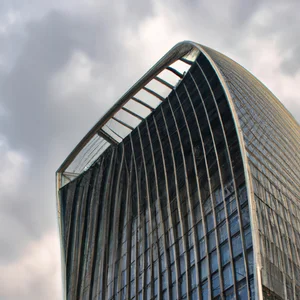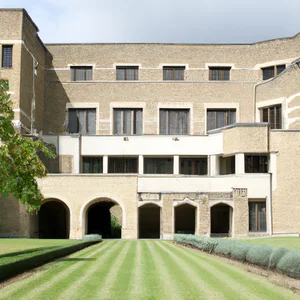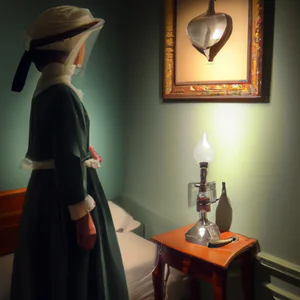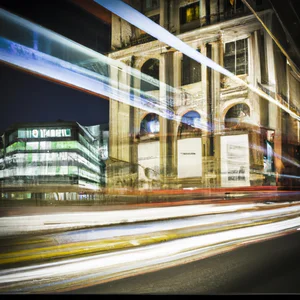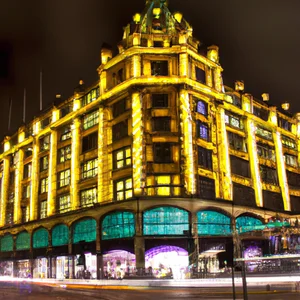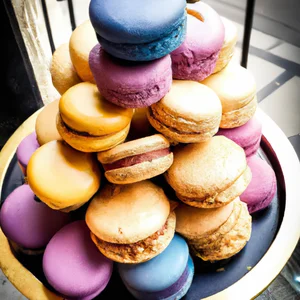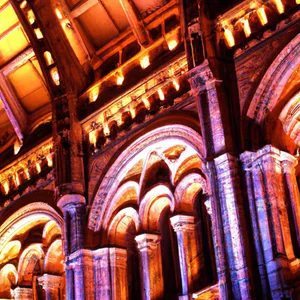Book your experience
Painting class at the National Gallery: Learn from the masters in an empty museum
Hey, have you ever thought about taking a painting class at the National Gallery? I’m telling you, it’s an experience that will leave you speechless! Imagine finding yourself in a practically deserted museum, with those masterpieces looking at you as if they wanted to tell you their story. It’s a bit like entering a dream, where colors and shapes dance before your eyes.
The first time I went, I felt a bit like a fish out of water, I won’t deny that. But then, over time, I realized that every brushstroke you put on the canvas is like a chat with an old friend. The masters, from Van Gogh to Monet, teach you not only to paint, but also to look at the world with different eyes. I think that’s the beauty of it: learning from those who have left an indelible mark on the art world.
Well, if you think about it, standing there, in that almost magical silence, while you try to recreate your little masterpiece, it’s as if time stopped. Maybe, while you’re painting, a funny episode from your childhood comes to mind, like when you tried to draw a picture and a monster came out instead of a cat. Well, that memory makes you smile and reminds you that art is also imperfection, right?
In short, I can’t say it’s easy, but who cares! The important thing is to have fun while learning, and maybe, at the end of the day, take home not only a canvas, but also a lot of emotions. So, if you want to get involved and get lost among the colors, I recommend you give it a try. You may not become the next Picasso, but you will certainly return home with a little more creativity. And who knows? You may discover a talent you didn’t even know you had!
Discover the National Gallery in solitude
The first time I walked through the door of the National Gallery in London, the silence was palpable. It was a weekday and, at that moment, I was alone in the heart of art history. The enormous canvases of Turner and Van Gogh seemed to whisper secrets to me, while the sunlight filtered through the large windows, creating a play of shadows and colors on the marble floor. That feeling of solitude allowed me to fully immerse myself in the works, feeling each brushstroke like a heartbeat of an artist who lived centuries before.
An authentic experience
The National Gallery, located in Trafalgar Square, houses one of the most extraordinary collections of art in the world, with over 2,300 paintings spanning the 13th to 19th centuries. To visit alone, consider going on weekdays, avoiding weekends when crowds can make it difficult to appreciate the beauty of the works. Furthermore, entry is free, but I recommend booking a guided tour or painting lesson in advance to avoid surprises. You can find further information on the National Gallery’s official website, where events and activities are updated regularly.
An insider tip
If you want an even more intimate experience, try visiting during the early hours of the morning. The National Gallery opens its doors from 10am, but some special events can start earlier. Ask about the possibility of accessing “private tours” or exclusive small group events. This will allow you to enjoy the works without the frenzy of tourists.
The cultural importance
The National Gallery is not just a museum; it is a beacon of culture and history. Founded in 1824, it played a crucial role in the democratization of art, making works accessible that were previously reserved for nobles and aristocrats. Its mission is to educate and inspire, a goal that continues to influence how art is perceived and valued today.
Commitment to sustainability
Visiting the National Gallery is also an opportunity to reflect on responsible tourism practices. The museum promotes events and activities that raise visitors’ awareness of the importance of sustainability, encouraging eco-friendly behaviors, such as the use of public transport to reach the structure.
A sensory immersion
As you walk among the canvases, let yourself be enveloped by the magic of the light that dances on the stuccos and paintings. The beauty of a work like “The Madonna of the Carnations” by Leonardo da Vinci is not only visual, but is also a sensory experience that involves smell and hearing. Imagine the scents of fresh colors and the silence broken only by the creak of your steps on the floor.
An activity worth trying
For a memorable experience, take a master-inspired painting class right in the gallery. Not only will you have the opportunity to learn artistic techniques, but you will also be able to create your own work of art, surrounded by the canvases that inspired you. You can find details of events and courses on the National Gallery website.
Myths and misconceptions
A common misconception is that the National Gallery is only for art experts. In fact, it’s a place where anyone can find inspiration and learn, regardless of their level of knowledge. The works speak to everyone, and the beauty of art is that everyone can interpret it in unique ways.
Final reflection
Next time you visit a museum, ask yourself: How can I experience art more deeply? The National Gallery offers a unique opportunity to connect with the great masters in a context of calm and reflection. You may find that the true beauty of the art lies not only in its appearance, but also in the story and emotions it evokes.
Painting techniques: The secrets of the masters
A close encounter with art
I remember the first time I crossed the threshold of the National Gallery in London. I wasn’t just a tourist, but an art enthusiast, eager to discover the secrets hidden behind the masterpieces of artists like Van Gogh and Caravaggio. While I got lost among the canvases, a detail struck me: the details of the brushstrokes, the skilful mix of colours, as if the paintings themselves told stories of emotions and techniques. In that moment, I understood that behind every work of art there is a world of painting techniques to explore.
Practical information
The National Gallery houses one of the most extraordinary collections in the world, with over 2,300 paintings spanning the 13th to 19th centuries. Visits can be scheduled on any day of the week and entry is free, although it is always advisable to book tickets online to avoid long waits. The gallery also offers guided tours and thematic workshops that reveal the techniques used by the masters, making the experience even more immersive. You can find further details on the National Gallery’s official website here.
An insider tip
If you want a truly unique experience, visit the museum during weekdays early in the morning. Not only will you have the chance to admire the works without the crowds, but you may also come across local artists who take inspiration from the great masters for their creations. This is a magical moment in which the silence of the museum allows you to completely immerse yourself in the beauty of the works.
A timeless cultural impact
The painting techniques that you can admire in the National Gallery are not only a tribute to the talents of the artists, but also a reflection of the cultural and historical currents of their time. For example, the shades of chiaroscuro used by Caravaggio not only express depth, but also tell the story of the struggle between good and evil, a recurring theme of the Baroque era. Understanding these techniques offers a deeper look into the history of art and the society that surrounds it.
Sustainability and art
The National Gallery is also committed to sustainable practices. Initiatives for the conservation of works of art and the use of eco-friendly materials in its programs Art education demonstrates a responsible approach towards art and the environment. This is an important aspect to consider when visiting a cultural institution.
Immerse yourself in the atmosphere
Imagine walking slowly down the halls of the National Gallery, your steps muffled by the polished parquet. The soft lights highlight the vibrant colors of the works, while the air is permeated with an atmosphere of creativity and inspiration. Each painting is an invitation to look more closely, to discover the story that lies behind every brushstroke.
An activity worth trying
For a truly unforgettable experience, join a painting workshop held inside the museum. Here, you will have the opportunity to apply the techniques learned from the great masters, creating your own work of art under the guidance of experts. This hands-on experience will allow you to appreciate even more the work of the painters you admire.
Dispelling the myths
A common misconception is that art is only accessible to those with specific training. In reality, the beauty of art also lies in its ability to connect people, regardless of their skills. The National Gallery is a place where everyone can feel inspired and motivated to explore their creativity.
Final reflection
Next time you visit the National Gallery, take a moment to look not only at the work, but also the technique behind it. What story does the painting tell you? And what emotions does it evoke in you? Art has the power to transform our perception of the world, and each visit can become an opportunity to discover new secrets and new perspectives.
An immersive experience: Create your own work of art
An indelible memory
Imagine finding yourself in the beating heart of London’s National Gallery, surrounded by masterpieces that have inspired generations of artists. The first time I crossed the threshold of this museum, it was like entering a dream. I was admiring Van Gogh’s famous painting, Wheatfield with Crows, when a bold idea took shape in my mind: why not try to create my own work of art inspired by these masters? This intuition led me to an experience that transformed the way I see art.
Practical information
The National Gallery is not just a place to contemplate works of art; It also offers courses and workshops for those who wish to explore their creativity. Every week, the museum organizes painting sessions where participants can try their hand at different techniques, using high quality materials provided directly by the museum. For up-to-date information on upcoming sessions, visit the National Gallery’s official website or check out their Eventbrite page.
An insider tip
If you want a truly unique experience, book an early morning painting session, before the museum opens to the public. This will allow you to enjoy the tranquility of the spaces and have a more intimate view of the works. You can even bring your own sketch and get feedback from expert artists on site!
The cultural impact
Art has the power to change the way we think and perceive the world. The National Gallery, with its collection of more than 2,300 works, not only preserves the history of Western art, but also provides a space for self-expression and innovation. Through the creation of your own artwork, you can connect deeply with artistic tradition and contribute to the current cultural dialogue.
Sustainability and responsibility
Participating in these artistic activities is also a way to practice responsible tourism. The National Gallery promotes the use of eco-sustainable materials during workshops and encourages participants to reflect on the environmental impact of their artistic choices. Supporting such initiatives means contributing to a greener future for art and culture.
Immerse yourself in the art
Imagine mixing vibrant colors on your palette, as the soft early morning light filters through the museum’s historic windows. Every brushstroke becomes a gesture of freedom, a way to express the emotions aroused by the masters around you. This experience is not just a creative act, but a sensory journey that awakens your artistic soul.
Recommended activity
In addition to painting workshops, consider attending a live “sketching” session. Here, artists of all levels can practice drawing from life, taking inspiration from the museum’s masterpieces. Not only will you improve your artistic skills, but you will also have the opportunity to interact with other art enthusiasts.
Myths to dispel
One of the common misconceptions is that art is reserved only for those with specific training. In reality, creating art is an experience accessible to everyone. It is not necessary to be an established artist to participate in the workshops; the mere desire to express oneself is already an excellent starting point.
A final reflection
After creating your work of art, I invite you to reflect: what does art mean to you? It is not only a reflection of what we see, but also what we feel and experience. The National Gallery offers a unique opportunity to not only observe, but also actively participate in this dialogue. Are you ready to discover your inner artist?
Behind the scenes: Little-known history of the museum
A personal experience
I still remember the first time I crossed the threshold of the National Gallery in London. Light streamed through the enormous windows, casting dancing shadows across the marble floors. As I walked among the masterpieces of Turner and Van Gogh, I realized how each painting told a story, not only that of the artist, but also that of the museum itself. But what struck me most was the discovery of some little-known stories behind the scenes of this prestigious institute, stories that often remain in the shadows.
Curiosities and historical details
The National Gallery, inaugurated in 1824, is much more than a simple container of works of art; it is a symbol of access and democratization of culture. Its origin is fascinating: it was founded through the purchase of a collection of paintings from a single dealer, John Julius Angerstein. The British government decided to purchase his collection to create a national museum, a move that was considered bold at the time.
Today, the museum houses over 2,300 works, but few know that its first exhibition was a selection of just 38 paintings. Many of the now iconic works were donated or purchased thanks to generous private contributions, an aspect that helped shape the collection as we know it now.
An insider tip
If you want to discover the lesser-known side of the National Gallery, take one of the “Behind the Scenes” guided tours held periodically. These tours, led by experts, offer the opportunity to explore areas not accessible to the public and hear fascinating anecdotes about the history of the museum and its artists. It’s an experience that enriches your visit, allowing you to see the museum through a new lens.
Cultural impact and sustainable practices
The National Gallery is not only a place of art conservation, but also an active cultural center. Through temporary exhibitions and educational programs, the museum stimulates dialogue and reflection on contemporary issues. Furthermore, to promote sustainable tourism, the National Gallery is implementing ecological practices such as waste reduction and the use of renewable energy resources, demonstrating how art can be a vehicle for social responsibility.
An invitation to explore
You might think that the National Gallery is just a place to visit hurry, but we invite you to take some time to explore the hidden stories behind the paintings. I advise you to linger in front of lesser-known works such as “The Marriage of the Virgin” by Rafael, where every detail reveals a profound narrative.
Myths and misconceptions
A common misconception is that the museum is always crowded and impossible to explore. In fact, visiting during weekly opening hours, especially on weekdays, can be a surprisingly peaceful experience. Furthermore, many visitors are unaware that entry is free, allowing them to return several times to deepen their knowledge.
A final reflection
The story of the National Gallery is a journey through time, a window into how art can shape and reflect the culture of a nation. What hidden stories will you discover during your visit? I encourage you to reflect on this as you explore the corridors of this extraordinary museum. Art is not just to be seen, but to be experienced and felt.
Painting lesson: From theory to practice
An inspiring personal experience
I still remember the moment I found myself in front of a Van Gogh masterpiece for the first time, immersed in his world of vibrant colors. The National Gallery in London is not just a place to admire works of art, but a real laboratory for those who want to explore painting directly. One morning, I attended a painting class that opened my eyes to how theory can turn into practice. The teacher, a local artist with infectious energy, led a group of us through fundamental techniques, showing how each brushstroke can tell a story.
Practical and up-to-date information
The National Gallery offers regular painting courses and workshops for all levels, from beginners to experts. It is advisable to book in advance, as places fill up quickly. You can find detailed information on the National Gallery’s official website, where additional resources are also available to learn more about artistic techniques.
An insider tip
A little-known tip is to bring a small notebook and pencil colors with you. During the lesson, you will have the opportunity to observe the details of the works and make sketches. This will not only enrich your experience, but will allow you to practice observation, a fundamental skill for every artist.
Cultural and historical impact
The National Gallery, with over 2,300 works, is a custodian of the history of European painting. The painting courses held there not only educate, but also celebrate cultural heritage, encouraging a new generation to connect with history through personal creation. This link between past and present is essential to understanding the value of art in contemporary society.
Sustainability in artistic practice
By participating in these classes, you will also have the opportunity to explore sustainable practices, such as the use of recycled or natural materials. The National Gallery is actively promoting a responsible approach to art, encouraging participants to reflect on the environmental impact of their artistic choices.
An immersive experience
Imagine sitting in a room lit by stunning natural light, surrounded by works of art that inspire you. As you mix your colors and draw your lines, you realize that, just like the great masters, you too are creating something unique. The feeling of freedom and creativity that is released in these moments is priceless.
Activities to try
If you’re looking for an activity to try, consider signing up for a ’live painting session’ offered by the National Gallery. These sessions will allow you to apply the techniques you learn directly in front of works of art, making learning even more engaging.
Myths to dispel
A common misconception is that only “true artists” can attend these classes. In fact, accessibility is a priority. Classes are designed to accommodate everyone, regardless of experience level. The true essence of these sessions is the desire to explore and create.
Final reflection
After taking a painting class at the National Gallery, I asked myself: What is my way of interpreting the world through art? These experiences not only enrich our understanding of art, but invite us to reflect on how we can express our unique stories. If you’ve ever thought about picking up a paintbrush, now might be a good time to do so. What do you think?
Sustainability in culture: A responsible approach
An inspiring personal experience
I vividly remember the day I visited the National Gallery in London for the first time. Not only was I fascinated by the artwork, but also by the atmosphere of tranquility that permeated every room. While looking at a painting by Van Gogh, a thought struck me: how fragile these works can be, symbols of a culture that must be preserved for future generations. That epiphany led me to reflect on the importance of sustainability in culture and tourism.
The National Gallery and its commitment to sustainability
The National Gallery is not only a place to admire masterpieces, but also an example of cultural sustainability. Recently, the institution has implemented several eco-friendly practices, such as the use of recycled materials for maintenance and LED lighting to reduce energy consumption. According to the Sustainable Museums Report 2022, many museums are adopting similar strategies to minimize their environmental impact.
An insider tip
If you want an authentic experience, take one of the sustainability guided tours offered by the National Gallery. These expert-led tours will not only take you behind the scenes of the museum, but also show you how works of art can influence our perception of sustainability. It’s a rare opportunity to explore the connection between art and the environment.
A significant cultural impact
Art has the power to evoke deep emotions and reflections, and its sustainability is crucial to preserving not only paintings, but also the culture itself. The National Gallery, with its extraordinary collections, represents a heritage that must be protected. Museums, as custodians of history, have a duty to educate the public on the importance of sustainability.
Responsible tourism practices
When visiting the National Gallery, consider using public transport to get there, helping to reduce the environmental impact of your trip. Also, find out about local art conservation initiatives, such as restoration workshops that use eco-sustainable techniques.
A sensorial journey through culture
Imagine walking through the museum’s halls, surrounded by vibrant colors and stories told through the ages. The light filtering through the windows creates an almost magical atmosphere, making each work an immersive experience. The National Gallery is not just a museum; it is a place where culture, history and sustainability intertwine.
Specific activities to try
I recommend you take part in one of the sustainable art workshops offered by the gallery, where you can learn to create works using recycled materials. This will not only stimulate your creativity, but will allow you to reflect on how art can be practiced responsibly.
Myths to dispel
A common misconception is that sustainability and art cannot coexist without compromising quality. In fact, many contemporary artists are proving that it is It is possible to create extraordinary works using sustainable materials. The National Gallery is at the forefront of this movement, demonstrating that art can be a powerful tool for change.
A final reflection
As you walk away from the National Gallery, ask yourself: How can I integrate sustainability into my daily life? Every small gesture counts, and your responsible approach can help preserve not only art, but also our environment. With an open mind and a curious heart, each of us can make a difference.
The magic of light: The colors of the masters
A personal anecdote
I remember my first encounter with the National Gallery, a mid-autumn afternoon when the sun’s rays filtered through the enormous windows of the museum, creating a play of light and shadow that danced on the canvases of the great masters. As I walked in solitude, I found myself in front of a Turner painting, the light seeming almost palpable, revealing the secrets of his painting. It was a moment of pure ecstasy, an experience that made me understand how light can transform not only a work of art, but also the soul of those who observe it.
Practical information
The National Gallery, located in the heart of London, houses one of the most extraordinary collections of art in the world. With over 2,300 paintings, you can admire masterpieces by artists such as Van Gogh, Monet and Renoir. Entrance is free, but it is advisable to book in advance to avoid long waits, especially on weekends. For up-to-date information on events, see the National Gallery’s official website.
An insider tip
A little-known tip concerns the museum’s opening hours. Many visitors are unaware that on Thursdays and Fridays, the National Gallery stays open until 9pm. This is the ideal time to explore the works in a quieter atmosphere, when artificial lights create an almost mystical atmosphere, enhancing the colors of the canvases in surprising ways.
The cultural impact of light
Light has always played a crucial role in the history of art. Artists like Caravaggio and Turner have dedicated their lives to capturing the beauty of light and its interaction with color. Their mastery of using light not only defined their style, but also influenced generations of artists, creating a lasting legacy that continues to inspire.
Sustainability and responsibility
In the age of sustainability, it is important to recognize the environmental impact of art. The National Gallery is committed to promoting sustainable practices, from the conservation of works to the use of eco-friendly materials in restoration workshops. This approach not only preserves art for future generations, but also reflects a broader respect for our planet.
Immersive experience
To fully experience the magic of light, I recommend you take part in a thematic guided tour. Some tours focus specifically on the use of light in paintings, allowing you to discover how masters manipulated light to evoke emotion and atmosphere. An unmissable activity is the sunset painting workshop, where you can try to capture the colors of the sky as night falls.
Myths to dispel
A common misconception is that classical art is static and lifeless. In reality, the colors and light in paintings can change dramatically depending on the lighting. Many visitors don’t realize that a work can appear completely different depending on the time of day and light source. This phenomenon is a testament to the genius of artists and their understanding of the natural world.
Final reflection
Light is more than just a visual element; it is a language that speaks directly to the soul. As you gaze at the vibrant colors of the masters, I invite you to consider: How does light influence your perception of art and life itself? Next time you visit the National Gallery, take a moment to immerse yourself in this magic and be inspired .
Unique tip: Sunrise painting in the museum
Imagine entering the National Gallery as the sun begins to rise, the first rays of light filter through the large windows, delicately caressing the canvases of the great masters. This is the essence of a sunrise painting lesson, an opportunity that few have the privilege of experiencing. I vividly remember my first experience in this enchanted setting: the fresh morning air, the scent of oil paints mixing with the emotion of being surrounded by timeless works of art. It is a moment that catapults you into a dimension of pure creativity, where the silence of the museum becomes a melody that stimulates the soul.
An exclusive opportunity
Sunrise painting classes in the National Gallery are rarely scheduled, yet they represent one of the most authentic and evocative experiences this museum has to offer. Participating in one of these sessions means not only having access to a normally crowded space, but also experiencing a moment of intimacy with the history of art. With the morning lighting creating an almost mystical atmosphere, each brushstroke becomes a tribute to the great artists who preceded it, while the silence envelops the participants in an embrace of reflection and inspiration.
An insider tip
For those who want to fully grasp this magical moment, I recommend arriving a little early. Use those minutes to wander the museum’s corridors and admire the works in solitude, allowing the energy of the art to wash over you. This little ritual will help you connect deeply with your creative space before you start painting.
Cultural impact
The National Gallery is not just a place of exhibition: it is a custodian of European culture and artistic history. Painting at dawn in this context allows you to reflect on the legacy of artists such as Turner and Van Gogh, who often found inspiration in the beauty of the landscape as the sun rose. This practice not only enriches your personal experience, but helps keep alive the artistic tradition that permeates the museum.
Sustainability and responsibility
Taking a sunrise painting class is also a way to embrace sustainable tourism practices. By opting for experiences that respect the environment and promote local culture, visitors can actively contribute to the preservation of London’s artistic and natural heritage. Choosing to participate in events at less crowded times is a simple but significant gesture.
An unforgettable experience
Don’t miss the opportunity to live this unique experience. Book your sunrise painting lesson in advance and prepare to discover an original way to immerse yourself in art. Let yourself be inspired by the colors and techniques of the masters, while the silence of the museum invites you to explore your creativity.
In a world where noise and distractions are the order of the day, have you ever wondered how refreshing it can be to paint surrounded by beauty and history, while the world slowly awakens around you?
Local Encounters: London Craftsmen and Artists
A personal experience
When I took the painting class at the National Gallery, I had the opportunity to discover not only the artistic wonders of the museum, but also to immerse myself in the vibrant community of artists who live and work in London. One afternoon, while looking for inspiration among the works of Turner and Monet, I met a local artist who told me about his passion for painting and the techniques he uses to capture the light of the city. This meeting made a profound impression on me; it was as if I had opened a window about a world of creativity and authenticity.
Practical information
London is a hotbed of artistic talent, and for those interested in exploring this, there are numerous events and artisan markets dotted around the city. The famous Borough Market, for example, not only offers gastronomic delights, but also often hosts local artists who exhibit and sell their works. Plus, London Craft Week is an unmissable annual event celebrating art and craft, with workshops and demonstrations open to the public.
Unconventional advice
If you want a truly unique experience, try attending one of the pop-up workshops by local artists. These events are held in unusual spaces, such as cafés or art galleries, and offer the opportunity to paint alongside emerging artists as they share their secrets. It’s a fantastic way to connect with the art community and learn new techniques in a casual environment.
Cultural impact
London, historically, has been a crossroads of cultures and artistic movements. From impressionism to contemporary art, the diversity of styles reflects the richness and complexity of urban life. Meetings with local artists not only enrich your experience, but allow you to better understand how London’s visual culture continues to evolve, blending tradition and innovation.
Sustainable tourism practices
Many London artists and craftsmen are committed to sustainable practices, using recycled materials or eco-friendly techniques for their works. Supporting these artists not only contributes to the local economy, but also promotes responsible and conscious tourism. Look to purchase artwork or attend workshops that emphasize sustainability.
A vivid atmosphere
Imagine walking the streets of London, surrounded by vibrant murals and art galleries that tell stories of lives and passions. The air is filled with the smell of fresh paint and roasted coffee, while the sound of paintbrushes dancing on the canvas mixes with laughter and lively conversation. Every corner of the city seems to pulsate with creativity, inviting you to explore and discover.
Activities to try
If you’re looking for hands-on experience, I recommend enrolling in a painting class, such as those offered by City Lit, a liberal arts school with an impressive reputation. Here, you can learn from the best local artists and, who knows, maybe even discover a new hidden talent.
Common misconceptions
A common misconception is that London’s art is only accessible to those with a prior cultural background. In reality, the arts community is welcoming and open to all, regardless of experience level. The beauty of art is that each of us has a unique voice to express, and local artists are often excited to share their knowledge with anyone who is interested.
Final reflection
After this experience, I asked myself: how many stories and passions are hidden behind every work of art we see? Each artist has a unique path and, by participating in local events, we can not only appreciate their art, but also become part of that story. London is not just an open-air museum; it is a place where every encounter can transform into a living work of art. Do you feel like exploring this side of the city?
A sensorial journey: Sounds and smells of art
A personal experience
I still remember the moment I crossed the threshold of the National Gallery in London, surrounded by an almost mystical atmosphere. It wasn’t just the sight of the incredible masterpieces of Van Gogh and Turner that captured my attention, but also the quiet sounds that filled the space. The whisper of conversations, the rustle of footsteps on the marble floors and the slight echo of the works on display created a unique melody. As I lost myself among the canvases, the air was pervaded by a delicate scent of wood and paint, an aroma that spoke of the history and life of the works themselves.
Practical information
The National Gallery, located in Trafalgar Square, is not just a refuge for art lovers, but a true sensory journey. Currently, the museum offers special guided tours that focus not only on the sight, but also on the auditory and olfactory experience of the works of art. These visits are available by reservation, and the National Gallery’s official website provides updated information on times and costs. Don’t forget to also check the apps dedicated to the museum, which offer enriched sound content for each work.
Unconventional advice
A little-known tip is to visit the gallery during less crowded hours, preferably on weekdays. Not only will this allow you to appreciate the art without distractions, but it will also give you the opportunity to notice details you might otherwise miss. Also, try to carry a journal with you to write down your sensory impressions: the colors you see, the sounds you hear, and even the smells that hit you. This little ritual will help you connect more deeply with art.
Cultural and historical impact
The National Gallery is not just a collection of works of art; it is a symbol of British cultural heritage and European artistic history. Since its opening in 1824, it has played a crucial role in making art accessible to all, thus promoting a culture of appreciation and sharing. The gallery has also helped educate generations of visitors about the importance of conservation and art history.
Sustainable tourism practices
In the context of sustainable tourism, the National Gallery has implemented several initiatives to reduce its environmental impact. These include using eco-friendly materials in museum maintenance and supporting exhibitions that celebrate local artists and sustainable artistic practices. Participating in events that promote sustainable art is one way to contribute to this cause.
An immersive experience
For a truly immersive experience, I recommend taking part in a sensory art workshop, where you can explore art through tactile and auditory techniques. These events will allow you to express your creativity as you immerse yourself in the sounds and smells surrounding the works.
Common misconceptions
A common myth is that art can only be appreciated through sight. In reality, art is a multisensory experience. The sounds of canvases being painted, the smell of art materials, and even the emotional vibrations a work can evoke are all elements that contribute to a richer, deeper interpretation.
Final reflection
The next time you visit a museum, we invite you to reflect: what sounds and smells accompany you in this experience? How can they influence the way you perceive art? Embracing a sensorial approach could prove to be the key to discovering new nuances in the world of art and culture.

 Architecture and Design
Architecture and Design Cities and Regions
Cities and Regions Culture and History
Culture and History Events and Festivals
Events and Festivals Fashion and Shopping
Fashion and Shopping Food and Wine
Food and Wine Nature and Adventure
Nature and Adventure Unique Experiences
Unique Experiences


















